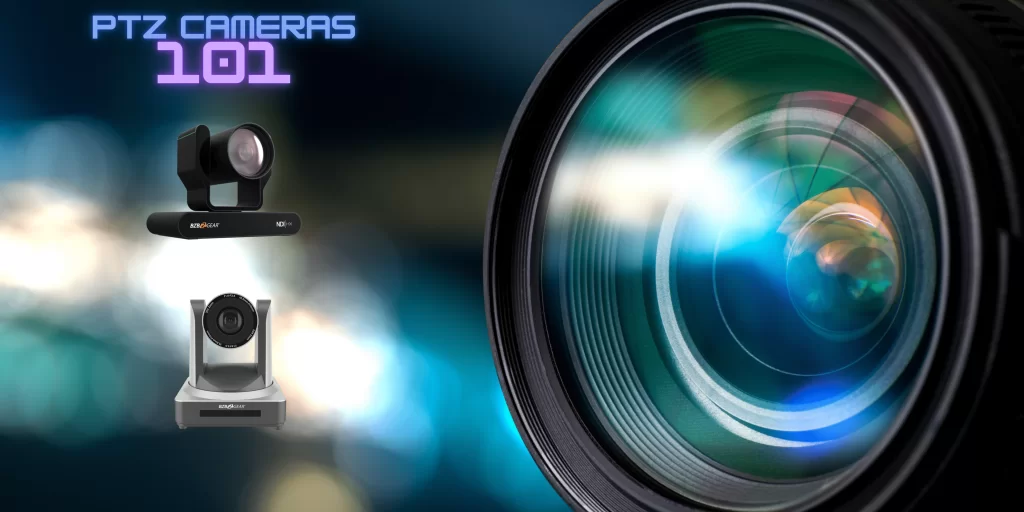What is a PTZ camera?

For video production beginners, trying to learn and memorize all of the terms and the technology can be overwhelming. Lately, one of the biggest questions has been; what is a PTZ camera?
To begin, PTZ stands for pan, tilt and zoom. PTZ cameras can pan horizontally, tilt on a vertical axis and zoom in/out. PTZ cameras basically automate camera operations, allowing one person to remotely control more than one camera. Most PTZ cameras can be controlled by a joystick controller or a compatible control software. Some of the other key features of PTZ cameras are: PoE (availability varies), video output options, NDI compatibility(availability varies) , and optical zoom options.
What is PoE?
PoE stands for power over ethernet. What power over ethernet does is provide power and a network connection to the camera with one PoE category cable. If your PTZ camera supports PoE, you will not need an additional power source. This allows for a clean and simple set up.
What are the video output options?
The video output allows you to livestream your camera footage on a display. Most PTZ cameras support HDMI/SDI or NDI. To decide which model works best for you, you’ll have to understand what they each have to offer.
PTZ cameras that support HDMI and SDI will allow you to stream your footage with either an HDMI cable or an SDI cable. HDMI is a standard option but has limitations around how far it can reach. HDMI cables can typically run 40-50ft. However, you may experience connectivity issues if you extend the HDMI signal beyond 25ft. With SDI, you can extend the reach up to 100 meters/328ft. SDI also sends a stronger signal and is a stronger cable overall.
NDI cameras on the other hand are able to stream footage over a network connection. NDI is an audio video over network protocol. That means, a device that is NDI compatible will be able to send video and audio over a local area network. NDI cameras also support PoE, which powers the camera and connects it to the network. In order to configure your NDI camera to the network, you’ll need to make sure the IP address for your camera matches the IP network scheme for your local area network. These settings will be accessible to you once you connect your camera to your PC or a network switch. The IP address for your PTZ camera can be found in the camera's manual. If your devices are supported by DHCP (dynamic host configuration protocol) the IP addresses will automatically configure. If not, you’ll need to go to your network settings and enable manual assignment. From there, you can assign a static IP address to configure your PTZ camera to the network. This brief overview will give you a general idea of how networking works for your PTZ camera. When actually starting this process, make sure you receive help from tech support!
What is optical zoom?
Optical zoom allows the PTZ camera to zoom in and out without losing clarity. What’s the difference between an optical zoom and a digital zoom? Optical zoom leverages the physical change in a lens to adjust the distance between the camera sensor and subject. Digital zoom on the other hand uses magnification technology to enlarge an area of an image (this method compromises the integrity of the picture by cutting down on the megapixels).
The three optical zoom options are: 10-12x, 20x and 30x. That is 25ft (10-12x), 50ft (20x) and 75ft (30x) zoom capability. To determine which model is right for your project, you’ll need to get a measurement. Think about where you’ll place your PTZ camera and where the subject/stage will be. You’ll want to be able to get a clear close-up view of the subject at the max zoom level.
Overall, PTZ cameras take a little more understanding before use but offer some great features. To check out some of BZBGEAR’s top PTZ cameras, visit: the BG-ADAMO, the BG-UPTZ-ND and the BG-VPTZN-HSU3.
8.00 a.m. - 5.00 p.m. (PST)
10.00 a.m. - 3.00 p.m. (PST)
(by appointment only)



